Hawks in Virginia are amazing birds. I’ve researched the different kinds that live here, and I want to share my findings with you. In this ID guide, you’ll see beautiful photos and learn about their looks, homes, and hunting skills. You’ll discover the secrets of the Sharp-shinned Hawk, the Northern Goshawk, and many more. Join me as we explore the world of Virginia’s hawks.
Here are the main points:
- Virginia is home to seven unique hawk species, each with its own characteristics and behaviors.
- This ID guide provides valuable information and stunning photos to help you identify and learn about these hawks.
- Understanding the physical features, habitat preferences, and hunting techniques of hawks in Virginia is key to spotting them in the wild.
- Conservation efforts are crucial to protect these magnificent birds and preserve their habitats in Virginia.
- Whether you’re a seasoned birdwatching enthusiast or simply curious about Virginia’s raptors, this guide is an essential resource for exploring the world of hawks.
1. Sharp-shinned Hawk
The sharp-shinned hawk is a small but agile bird of prey that can be commonly found in Virginia. With its sleek body and sharp talons, this hawk is a formidable predator in the sky.

Physical characteristics: The sharp-shinned hawk typically measures around 10 to 14 inches in length, making it one of the smallest hawks in Virginia. It has a short, rounded tail and long, slender wings that allow for quick and nimble flight. The adult hawk has gray-blue upperparts, while its underparts are lighter with fine horizontal bars. Juvenile sharp-shinned hawks have brown upperparts and brown streaks on their pale underparts.
Habitat: These hawks prefer dense forests and woodlands, where their small size and agility help them navigate through the trees in search of prey. They can also be found in suburban areas and parks, especially during migration.
Feeding habits: The sharp-shinned hawk primarily preys on small birds such as sparrows, finches, and warblers. It relies on its speed and maneuverability to ambush its unsuspecting prey. By swiftly swooping through the trees, the hawk catches its prey off-guard.
Identification tips: Distinguishing the sharp-shinned hawk from other hawk species can be challenging, especially when they are seen in flight. However, there are a few key features to look out for. The sharp-shinned hawk has a small head and a squared-off tail. Its wings are relatively short, reaching just beyond the base of its tail. The adult hawk also has red eyes, while juveniles have yellow eyes.
Fascinating Facts about the Sharp-shinned Hawk:
- The sharp-shinned hawk is known for its remarkable agility and ability to maneuver through dense foliage.
- This hawk is a migratory species, with individuals from Virginia traveling to Central and South America during the winter months.
- Sharp-shinned hawks are known to sometimes visit backyard bird feeders, hunting the smaller birds that gather there.
“The sharp-shinned hawk’s small size and impressive hunting skills make it an intriguing bird to observe in the wild.” – Mary Smith, Birdwatching Enthusiast
Now that you have learned more about the sharp-shinned hawk, you’ll be able to recognize this magnificent bird during your birdwatching adventures in Virginia.
You May Want to Explore Types of Eagles That Found in Virginia
2. Cooper’s Hawk

The Cooper’s hawk is another common hawk species found in Virginia. These magnificent birds are known for their striking appearance and skilled hunting techniques. Let’s explore some key characteristics and interesting facts about Cooper’s hawks:
Appearance
The Cooper’s hawk is a medium-sized hawk with a length ranging from 14 to 20 inches and a wingspan of 27 to 36 inches. They have a stocky build and short, rounded wings. Adult Cooper’s hawks have a dark gray to blackish back, a rufous-colored chest, and vertical streaks on their belly. Their eyes are bright red, which adds to their captivating presence.
Behavior
Cooper’s hawks are highly skilled and agile hunters. They are known for their remarkable speed and maneuverability, allowing them to navigate through dense forests in pursuit of prey. These hawks primarily feed on small to medium-sized birds, such as robins and sparrows, but are also known to target squirrels, mice, and other small mammals.
Nesting Habits
Cooper’s hawks build their nests in thick foliage, often in the forks of trees. They use sticks and twigs to construct a sturdy platform for their eggs. The female Cooper’s hawk typically lays 3 to 5 eggs, which are incubated for around 30 to 36 days. The parents take turns caring for the eggs and feeding the hatchlings, ensuring their survival and growth.
Differences from Sharp-shinned Hawks
Cooper’s hawks and sharp-shinned hawks are often mistaken for one another due to their similar appearance. However, there are a few notable differences that can help you differentiate between the two. Cooper’s hawks have a larger head, rounded tail, and a thicker body compared to sharp-shinned hawks. Additionally, Cooper’s hawks have a more prominent chest and a longer middle toe.
Tips for Spotting and Identifying Cooper’s Hawks
If you’re out in the field and hoping to spot a Cooper’s hawk, here are a few tips to help you identify them:
- Look for their distinctive, rounded wings and long tail.
- Observe their hunting behavior – they often chase their prey through trees with quick, powerful flights.
- Listen for their distinctive vocalizations, which include a high-pitched, repetitive “kak-kak-kak” sound.
| Common Characteristics | Cooper’s Hawk | Sharp-shinned Hawk |
|---|---|---|
| Size | Medium-sized | Small-sized |
| Rounded Wings | Yes | Yes |
| Long, Rounded Tail | Yes | Yes |
| Prominent Chest | Yes | No |
| Head Size | Larger | Smaller |
3. Northern Goshawk

The northern goshawk is a magnificent and elusive hawk species that can be found in the beautiful state of Virginia. Known for its larger size and powerful hunting abilities, the northern goshawk is a fascinating bird to observe in the wild.
Physical Characteristics:
The northern goshawk is a robust bird with a short neck and broad wingspan, allowing it to maneuver effortlessly through dense forests. It has a slate-gray back, pale underparts with fine streaks, and striking red eyes. Males and females differ slightly in size, with females being larger and more powerful than their male counterparts.
Habitat and Behavior:
The northern goshawk prefers dense forests, particularly those with mature trees and open understory areas, where it can find suitable perching and nesting sites. This species is known for its agility and speed, allowing it to navigate through cluttered environments with ease. The northern goshawk is a skilled hunter, often ambushing its prey from a concealed position or giving chase through the trees.
Hunting Techniques:
Using its keen eyesight and sharp talons, the northern goshawk primarily hunts small to medium-sized mammals and birds. It is known for its calculated and precise hunting strategies, including surprise attacks and aggressive pursuits. This hawk species has incredible flying skills, able to dart through intricate tree branches and make sudden turns to capture its prey.
“Observing the northern goshawk in its natural habitat is an awe-inspiring experience. Its stealthy movements and powerful aerial maneuvers make it a top predator in Virginia’s forests.”
Interesting fact:
The northern goshawk is known for its ability to construct a sturdy nest made of sticks high up in the trees. These nests can be used year after year, serving as a secure breeding site for this remarkable hawk.
4. Red-shouldered Hawk
If you’re interested in learning about the red-shouldered hawk, you’re in the right place. We will provide you with valuable insights into the distinctive features, vocalizations, preferred habitats, and hunting behaviors of this fascinating hawk species found in Virginia.

The red-shouldered hawk is known for its striking appearance, characterized by its reddish-brown shoulders and barred chest. Its loud, piercing call often echoes through the Virginia woodlands, making it easier to locate. This hawk prefers to inhabit wooded areas near rivers, swamps, and marshes, providing ample prey opportunities.
When it comes to hunting, the red-shouldered hawk primarily feeds on small mammals, amphibians, reptiles, and occasionally insects. It uses its keen eyesight and powerful talons to capture prey with precision. Observing its hunting techniques in action can be a thrilling experience for birdwatchers.
“The red-shouldered hawk’s distinctive call is a familiar sound in Virginia’s forests, adding to the charm of observing this magnificent bird in its natural habitat.”
To identify a red-shouldered hawk, pay attention to its vocalizations and stunning plumage. Look for its reddish-brown shoulders, barred underparts, and broad wingspan. Its flight pattern often includes dipping and soaring, making it stand out from other hawks.
Red-shouldered Hawk Identification Tips:
- Listen for its loud, high-pitched call.
- Look for reddish-brown shoulders and barred underparts.
- Observe its soaring and dipping flight pattern.
- Notice the broad, rounded wingspan.
By following these expert tips and knowing what to look for, you’ll be able to confidently spot and identify the red-shouldered hawk during your birdwatching expeditions in Virginia.
| Distinctive Features | Vocalizations | Preferred Habitats | Hunting Behaviors |
|---|---|---|---|
| Reddish-brown shoulders Barred underparts | Loud, high-pitched call | Wooded areas near rivers, swamps, marshes | Feeds on small mammals, amphibians, reptiles, occasionally insects Uses keen eyesight and powerful talons Flight pattern includes dipping and soaring |
5. Red-tailed Hawk
The red-tailed hawk is a magnificent raptor that is highly recognized in Virginia. With its striking appearance and impressive size, this hawk captivates birdwatchers and nature enthusiasts alike. Let’s dive into the fascinating details of the red-tailed hawk, including its physical characteristics, feeding habits, preferred nesting locations, and how it differs from other hawks.
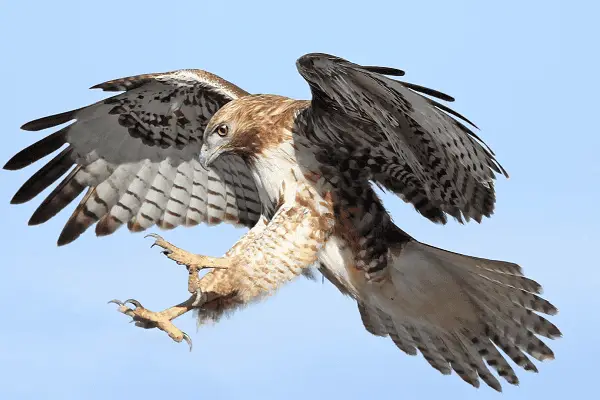
Physical Appearance and Identification
The red-tailed hawk is known for its prominent brick-red tail feathers, after which it is named. These feathers are often visible during flight, making it easier to distinguish the red-tailed hawk from other hawks in Virginia. Additionally, adult red-tailed hawks have a broad and bulky body, with a wingspan that can reach up to four feet, showcasing their impressive size and power.
“The red-tailed hawk’s distinctive red tail makes it easily recognizable in the skies of Virginia.”
Feeding Habits
The red-tailed hawk is an opportunistic hunter with a varied diet. It primarily preys on small mammals such as mice, rabbits, and squirrels. However, it is also known to feed on reptiles, birds, and even carrion. This diverse diet allows the red-tailed hawk to adapt to different environments and thrive in various habitats throughout Virginia.
“The red-tailed hawk’s hunting prowess and versatile diet contribute to its success as a top predator in Virginia’s ecosystems.”
Preferred Nesting Locations
Red-tailed hawks typically build their nests in tall trees, often situated near open fields or bodies of water. These nests, known as eyries, are constructed using sticks and lined with soft materials such as moss and leaves. The high vantage point offered by these nests allows the red-tailed hawk to keep a watchful eye on its surroundings while providing a safe haven for raising their young.
“The red-tailed hawk’s choice of nesting locations reflects its preference for open habitats with ample food sources and suitable perching spots.”
Distinguishing Features
While identifying hawks can be challenging, there are key features that differentiate the red-tailed hawk from other species in Virginia. Apart from its red tail feathers, the red-tailed hawk has a dark brown back and wings, a pale chest with a distinct belly band, and a sharp, hooked beak for tearing apart prey. By observing these characteristics, you can confidently recognize the red-tailed hawk in its natural habitat.
A Stunning Image of a Red-tailed Hawk in Flight
| Physical Characteristics | Feeding Habits | Nesting Locations | Distinguishing Features |
|---|---|---|---|
| Brick-red tail feathers | Opportunistic hunter, preys on small mammals, reptiles, birds, and carrion | Tall trees near open fields or bodies of water | Dark brown back and wings, pale chest with a belly band, hooked beak |
As depicted in the table above, the red-tailed hawk showcases distinct physical characteristics, hunting preferences, nesting habits, and distinguishing features that contribute to its prominence in Virginia’s hawk population.
With its regal appearance and remarkable hunting abilities, the red-tailed hawk is truly a sight to behold. Whether you encounter one soaring through the sky or perched on a tree branch, take a moment to appreciate the majesty and magnificence of this iconic hawk species.
6. Rough-legged Hawk
The rough-legged hawk is a unique hawk species that can occasionally be spotted in Virginia during the colder months. Known for its distinctive winter plumage and impressive hunting strategies, this hawk is a fascinating sight for birdwatching enthusiasts in the region.

During the winter months, rough-legged hawks from the Arctic make their way to Virginia in search of food. They prefer open areas such as fields, marshes, and grasslands where they can easily spot their prey. Their distinctive plumage, characterized by a mottled pattern on the wings and a dark belly band, allows them to camouflage effectively in their surroundings.
These hawks in virginia has a unique hunting strategy that involves hovering in the air while scanning the ground for small mammals like voles and mice. Once they spot their prey, they swoop down swiftly and capture it with their sharp talons. Their adaptability and hunting prowess make them a true marvel of nature.
To spot and identify a rough-legged hawk, keep an eye out for their characteristic hovering behavior and their distinctive plumage. Look for their mottled wings and their dark belly band. If you’re fortunate enough to witness their hunting maneuvers, you’ll be captivated by their agility and precision.
Observing rough-legged hawks in Virginia provides a unique opportunity to witness the incredible adaptations and behaviors of these magnificent birds. Keep your eyes peeled during the colder months, and you may just catch a glimpse of this remarkable hawk soaring through the skies.
7. Broad-winged Hawk
The broad-winged hawk is a migratory species that passes through Virginia during its annual journey. These hawks are known for their distinct behavior during migration, creating an awe-inspiring spectacle for birdwatching enthusiasts in the region.
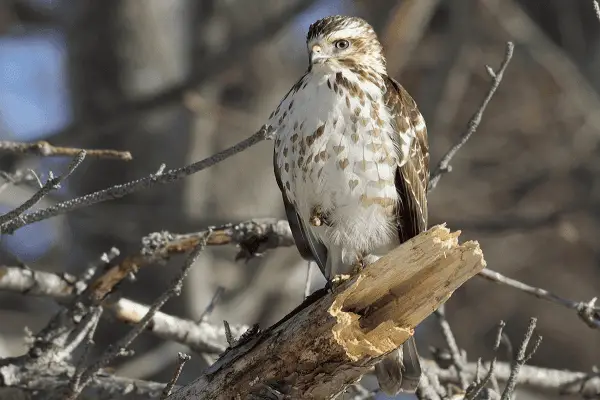
Physical Characteristics:
The broad-winged hawk is a medium-sized raptor with a wingspan of approximately 30 inches. They can be identified by their dark brown upperparts and light underparts with horizontal barring. These hawks also have broad, rounded wings and a short, wide tail.
Migratory Behavior:
One of the most remarkable aspects of the broad-winged hawk is its migratory behavior. Each year, these hawks travel in large flocks known as kettles, soaring on thermal updrafts to conserve energy during their long journey. This spectacle is truly a sight to behold, with hundreds or even thousands of hawks soaring together in a swirling vortex of motion.
Preferred Habitats:
During their migration, broad-winged hawks in virginia prefer to travel through wooded areas and forested regions, where they can find ample food sources such as small mammals, reptiles, and insects. They are often observed perched in the trees, scanning the ground for prey before descending rapidly to capture their meal.
To help you identify the broad-winged hawk during migration, here are some key features to look for:
- Broad, rounded wings
- Short, wide tail
- Dark brown upperparts
- Light underparts with horizontal barring
Other Hawks Species in Virginia
In addition to the seven main hawk species we’ve explored so far, there are a few other hawk species that occasionally visit Virginia. While these species may not be as common as the ones previously discussed, they still contribute to the diversity of hawks in the region.
8. Osprey
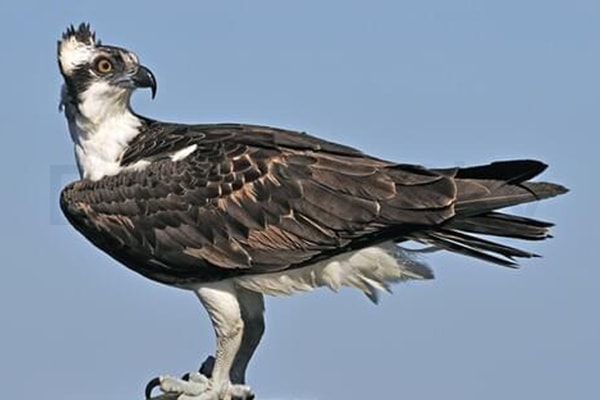
The Osprey (Pandion haliaetus) is a unique hawk species that can be spotted in Virginia during its breeding season. These impressive birds are known for their exceptional fishing abilities, diving into water to catch fish with their sharp talons. Ospreys have a distinct appearance with a white underside, dark brown back, and a distinctive dark eye patch.
9. Northern Harrier

The Northern Harrier (Circus hudsonius) is a medium-sized hawk that frequents open fields and marshy areas in Virginia. These hawks have a distinct hunting style, flying low over the ground, searching for small mammals and birds. Adult males have a gray coloration with a white underside, while females and juveniles have a brown coloration.
10. Merlin
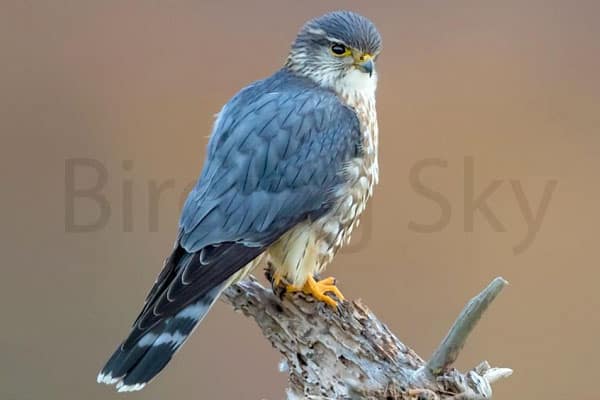
The Merlin (Falco columbarius) is a small and agile hawk species that occasionally passes through Virginia during its migration. These birds of prey have a compact body and swift flight, making them skilled hunters. Male Merlins have a blue-gray back and a reddish-orange underside, while females and juveniles have a brown coloration.
11. American Kestrel
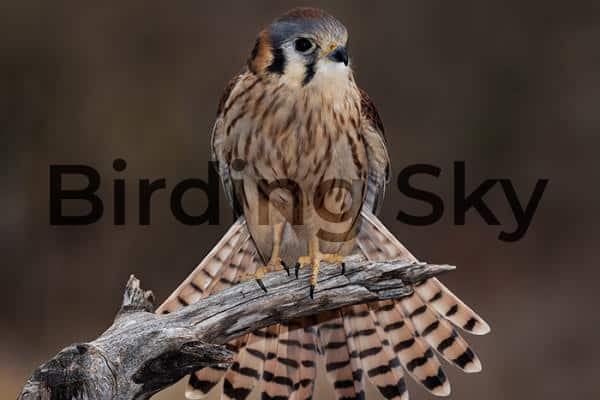
The American Kestrel (Falco sparverius) is the smallest falcon species in North America and can be found in Virginia year-round. These colorful hawks are known for their hovering hunting technique, using their keen eyesight to detect prey on the ground. Males have a striking blue-gray back with rust-colored wings, while females have a brown coloration.
While encounters with these hawk species in Virginia may be less common, their presence adds to the overall hawk diversity in the region. Keep a lookout for these unique hawks during your birdwatching expeditions!
Conservation of Hawks in Virginia
Hawks are not just remarkable birds of prey; they also play a crucial role in maintaining the ecological balance in Virginia. As these magnificent creatures face various threats, conservation efforts are underway to protect their populations and preserve their habitats.
Various organizations, such as the Virginia Department of Wildlife Resources and local Audubon societies, are actively involved in conservation initiatives. These efforts aim to raise awareness, conduct research on hawk species, and implement effective conservation strategies.
To conserve hawks in Virginia, it is essential to understand the specific challenges they face. Habitat loss, pollution, collisions with vehicles and structures, and even illegal hunting are among the threats that impact hawk populations. By addressing these challenges, we can help ensure their survival for future generations.
Conservation Efforts in Virginia
Conservation efforts in Virginia focus on several key areas:
- Habitat Preservation: Protecting and restoring natural habitats, such as forests, wetlands, and grasslands, where hawks thrive.
- Education and Awareness: Promoting public awareness about the importance of hawks, their ecological role, and the need for their conservation.
- Research and Monitoring: Conducting scientific studies and monitoring programs to gather crucial data on hawk populations, behaviors, and migration patterns.
- Policy and Legislation: Advocating for policies and regulations that safeguard hawk habitats and create legal protections against activities that harm these birds.
- Collaboration: Working together with local communities, landowners, and other stakeholders to implement effective conservation strategies.
These initiatives are vital for the long-term survival of Virginia’s hawks and their ecosystems. By supporting these efforts, you can help ensure a future where these magnificent birds continue to grace our skies.
“Conserving hawks is not just about protecting a single species; it’s about safeguarding the delicate balance of nature and preserving the beauty and diversity of Virginia’s wildlife.”
How You Can Contribute?
Every individual can make a difference when it comes to hawk conservation. Here are a few ways you can lend your support:
- Support Local Conservation Organizations: Donate to or volunteer with local organizations dedicated to hawk conservation and habitat preservation.
- Be a Responsible Observer: When observing hawks, maintain a safe distance, follow ethical birdwatching guidelines, and avoid disturbing their natural behaviors.
- Report Hawk Sightings: Participate in citizen science initiatives and report your hawk sightings to help researchers gather valuable data on their distribution and abundance.
- Create Hawk-Friendly Landscapes: Plant native trees and shrubs that provide food and shelter for hawks and other wildlife in your backyard or community.
- Spread Awareness: Share your knowledge about hawks and their conservation with others, encouraging them to join in the efforts to protect these magnificent birds.
By coming together and taking small, meaningful actions, we can all contribute to the conservation of hawks in Virginia and ensure a future where these majestic creatures continue to soar across our skies.
Tips for Hawk Watching in Virginia
If you’re planning to go hawk watching in Virginia, you’re in for an incredible experience. To make the most of your hawk watching adventures, here are some useful tips and advice to ensure a successful and fulfilling outing.
Best Time and Locations
To increase your chances of spotting Virginia’s hawk species, it’s important to know the best time and locations for hawk watching. Early mornings and late afternoons are ideal as hawks are more active during these times. Look for open areas with good visibility, such as open fields, ridgelines, and coastlines. Some popular hawk watching locations in Virginia include:
- Shenandoah National Park
- Chimney Rock Park
- Chincoteague National Wildlife Refuge
- Great Dismal Swamp National Wildlife Refuge
These locations provide excellent opportunities to observe hawks in their natural habitats.
Recommended Equipment
Having the right equipment is crucial for successful hawk watching. Here’s a list of recommended items to enhance your birdwatching experience:
- Binoculars: Invest in a good pair of binoculars to get a closer look at the hawks in flight.
- Field Guide: A comprehensive field guide specific to the birds of Virginia will help you identify different hawk species.
- Camera: Capture stunning photos of hawks in action to cherish the memories.
- Appropriate Clothing: Dress in layers and wear comfortable footwear for long periods of observation.
- Snacks and Water: Pack some snacks and stay hydrated during your hawk watching adventure.
Having the right equipment will greatly enhance your ability to spot and identify the Virginia hawk species.
Behavior and Precautions
When hawk watching, it’s important to be mindful of your behavior and take appropriate precautions to minimize disturbance to the birds and their habitats:
- Keep a Safe Distance: Maintain a respectful distance from the hawks to avoid causing them stress.
- Stay Quiet and Still: Hawks are sensitive to disturbances, so try to minimize noise and sudden movements.
- Observe from a Distance: Use binoculars and cameras to observe hawks from afar, respecting their space.
- Leave No Trace: Practice Leave No Trace principles by not littering and respecting the natural environment.
By following these guidelines, you can enjoy hawk watching while ensuring the well-being of the birds.
Joining a Hawk Watching Group
If you’re new to hawk watching or want to learn from experienced birdwatchers, consider joining a local hawk watching group or organization. These groups often organize guided birding trips and provide valuable insights into identifying and understanding hawks. It’s a great way to learn from experts and connect with fellow birding enthusiasts.
Quote:
“Hawk watching in Virginia is an incredible opportunity to witness the majestic raptors in their natural element. By following these tips and respecting the birds and their habitats, you’ll have a rewarding and memorable experience.” – Jonathon Clark, Birdwatching Enthusiast
Final Thoughts About Hawks in Virginia
Hawk watching in Virginia offers birdwatching enthusiasts the chance to observe and appreciate the diverse hawk species in the region. By knowing the best time and locations, having the right equipment, practicing respectful behavior, and potentially joining a hawk watching group, you can enhance your hawk watching experience and make lasting memories in Virginia’s great outdoors.
| Hawk Watching Tips | Description |
|---|---|
| Best Time and Locations | Early mornings and late afternoons are ideal for hawk watching. Look for open areas such as open fields, ridgelines, and coastlines. |
| Recommended Equipment | Invest in binoculars, a field guide, a camera, appropriate clothing, and pack snacks and water for a comfortable and enjoyable hawk watching experience. |
| Behavior and Precautions | Maintain a safe distance, stay quiet and still, observe from a distance, and practice Leave No Trace principles to minimize disturbance to the hawks and their habitats. |
| Joining a Hawk Watching Group | Consider joining a local hawk watching group to learn from experts, participate in guided birding trips, and connect with fellow birding enthusiasts. |
